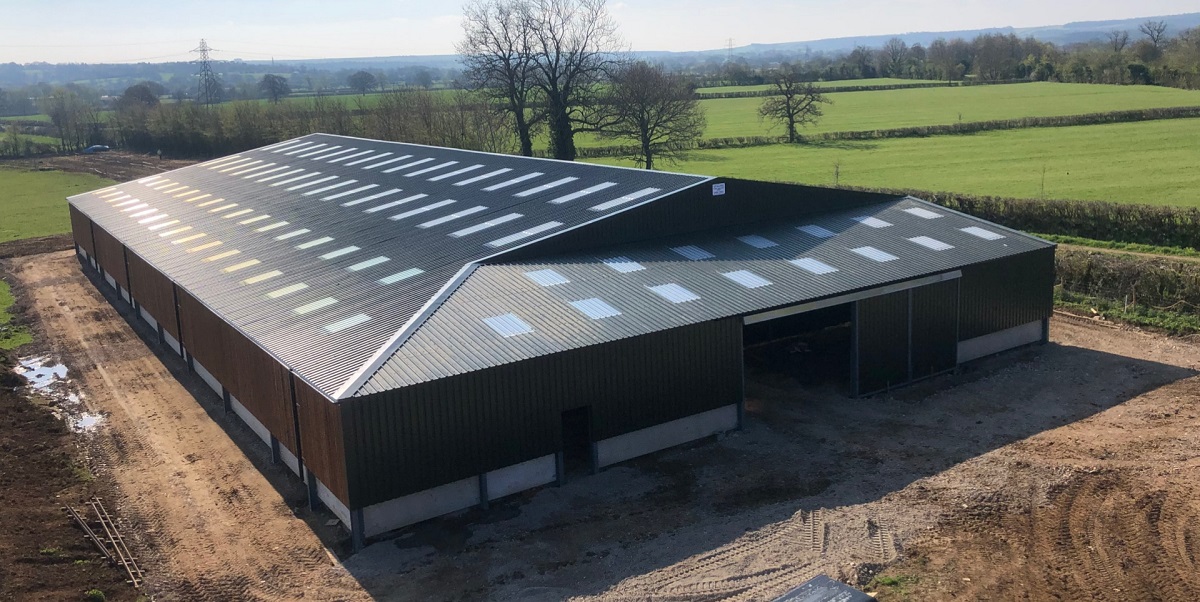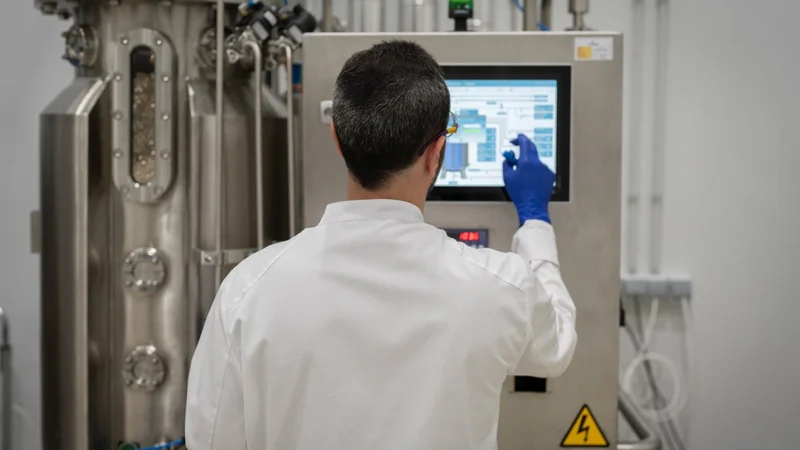Discover the Top Benefits and Latest Innovations in Steel Frame Agricultural Buildings

If you’re in the UK and looking to boost your farming operations, steel frame agricultural buildings might just be the game-changer you need. These structures offer unparalleled durability, flexibility, and cost-effectiveness, making them an ideal choice for modern farmers. Whether you’re housing livestock, storing equipment, or setting up a new workshop, steel frames provide a robust and reliable solution.
Gone are the days when wooden barns were your only option. Steel frame buildings not only withstand the unpredictable British weather but also require minimal maintenance, saving you time and money in the long run. Curious about how these structures can benefit your agricultural needs? Let’s dive into the world of steel frame agricultural buildings and explore why they’re becoming the go-to option for savvy UK farmers.
Benefits of Using Steel Frame Agricultural Buildings
Steel frame agricultural buildings offer several advantages for enhancing farming operations in the UK. From durability to cost-effectiveness, these structures present a range of benefits essential for modern agriculture.
Durability and Longevity
Steel frames provide exceptional durability, maintaining structural integrity even during harsh weather conditions. Unlike wooden barns, which can rot or be weakened by pests, steel frames resist moisture, pests, and fire. British weather, known for its unpredictability, won’t compromise these buildings. A steel frame building easily endures heavy snow, strong winds, and rain, ensuring your investment’s longevity.
Cost-Effectiveness
Steel frame agricultural buildings are cost-effective compared to traditional wooden structures. Initial costs might be similar, but long-term maintenance savings make steel frames more economical. Steel requires less maintenance and has a longer lifespan, reducing the frequency of expensive repairs and replacements. Additionally, construction times for steel buildings are shorter, minimising labour costs and allowing for quicker operational setup. Consider unsecured business loans to invest in these structures, as they often come with favourable terms that can facilitate timely investments.
Environmental Impact
Steel frames are an environmentally friendly choice due to their recyclability. Unlike wood, which contributes to deforestation, steel can be repeatedly recycled without losing quality. The manufacturing process for steel has advanced, reducing carbon emissions and improving energy efficiency. Opting for a steel frame agricultural building supports sustainable farming practices, aligns with eco-friendly initiatives, and promotes long-term environmental benefits.
Choosing steel frame agricultural buildings leverages modern engineering advancements to improve your farming operations’ efficiency, durability, and sustainability.
Design and Construction of Steel Frame Agricultural Buildings
Planning and Design Considerations
When designing steel frame agricultural buildings, understanding your specific needs is crucial. Different types of farming operations call for differing designs. For instance, housing livestock might require better ventilation and insulation than storage facilities for equipment. Identify what you need the most for your operation.
Think about the size and scalability of your building. Sometimes, you’ll start small, but having the option to expand can save you headaches down the line. Assessing the site conditions is also important – check for soil stability and local weather patterns. If you’re building in a high-wind area, frame reinforcement might be necessary.
Next, consider the layout. Efficient designs enhance productivity. For example, place frequently accessed areas close to entry points. This reduces unnecessary movement and time wastage. Remember, good planning doesn’t just enhance functionality; it can significantly cut down on your overall costs.
Incorporating sustainable practices is another key consideration. Using recyclable materials aligns with sustainable farming practices and can often attract financial incentives from environmental schemes. And, it’s worth exploring the various forms of financing available, such as unsecured business loans, to ensure you have the required capital without putting your assets at risk.
Key Construction Phases
Once you’ve got your design nailed down, it’s time to move on to construction. This typically involves several distinct phases. First up is site preparation. Clear the land and ensure it’s level. This step is vital for a stable foundation, preventing future structural issues.
Foundation work comes next. The foundation must be robust enough to support the steel frame without shifting or settling. Concrete slabs are commonly used, but this can vary based on your specific design and soil conditions.
After the foundation is set, you’ll move on to assembling the steel framework. Precision is critical here – every joint, beam, and column must be correctly aligned and secure. If corners are cut during this phase, it could compromise the building’s stability.
Installation of roofing and cladding follows. This not only provides the necessary weather protection but also adds to the structural integrity. Selecting materials that match local climate conditions is essential. For example, corrosion-resistant materials are ideal for areas with high humidity.
The final stage involves fitting out the interior. Whether it’s installing partitions, setting up ventilation systems, or adding insulation, this is when the building takes shape according to your initial design. Don’t rush through this phase – details matter and skipping on quality can result in costly fixes later.
By understanding each phase and addressing specific considerations, you can ensure your steel frame agricultural building efficiently supports your farming activities.
Maintenance and Care for Steel Frame Agricultural Buildings
Routine Maintenance Tips
Regular upkeep ensures the longevity and efficiency of steel frame agricultural buildings. First, inspect buildings at least twice a year, focusing on potential corrosion, structural damages, and weather impacts. Look for rust on steel joints and beams, particularly after heavy rains. Keep an eye on paintwork—touching up rusty spots with weather-resistant paint keeps corrosion at bay.
Clean gutters and downspouts regularly to prevent water pooling, which can compromise the structure. Check seals around windows and doors for wear and replace them if gaps appear. Keep a maintenance logbook to track all inspections and repairs.
Addressing Common Issues
Steel frame agricultural buildings can face issues like rust, leaks, and insulation problems. Addressing these promptly prevents further damage. If you find rust, use a wire brush to clean the affected area thoroughly, then coat it with an anti-rust primer. For leaks, identify where moisture is entering, seal the area with waterproof materials, and ensure proper drainage around the structure.
Insulation performance is crucial, particularly in temperature-sensitive environments. If you notice damp or drafts, inspect the insulation for gaps or damage. Replace or fortify insulation to ensure an optimal environment for agricultural activities.
Innovations and Improvements
Recent innovations in steel frame agricultural buildings offer enhanced durability and ease of maintenance. Galvanised steel, for instance, provides superior resistance to rust, reducing maintenance efforts. Prefabricated components simplify repairs and upgrades. Advances in insulation materials also improve thermal efficiency and durability.
Energy-efficient lighting and ventilation systems are now available, reducing operational costs. Solar panels can be integrated into roofing, providing a sustainable energy source and reducing electricity expenses. These innovations not only improve the building’s performance but also contribute to long-term savings.
Unsecured business loans may be an excellent financing option for these enhancements. They provide quick access to funds without requiring collateral, allowing you to invest in maintenance and modernisation promptly.
Remember to stay proactive with your maintenance strategy, ensuring your steel frame agricultural building remains a robust asset for years to come.
Concluding
Steel frame agricultural buildings offer a robust and cost-effective solution for modern farming needs. By understanding your specific requirements and incorporating sustainable practices, you can design a building that enhances your operational efficiency. Regular maintenance and timely upgrades will ensure your structure remains in top condition for years to come. Embracing innovations like galvanised steel and energy-efficient systems can lead to significant long-term savings. With the right approach, your steel frame agricultural building will be a valuable asset to your farming enterprise.


